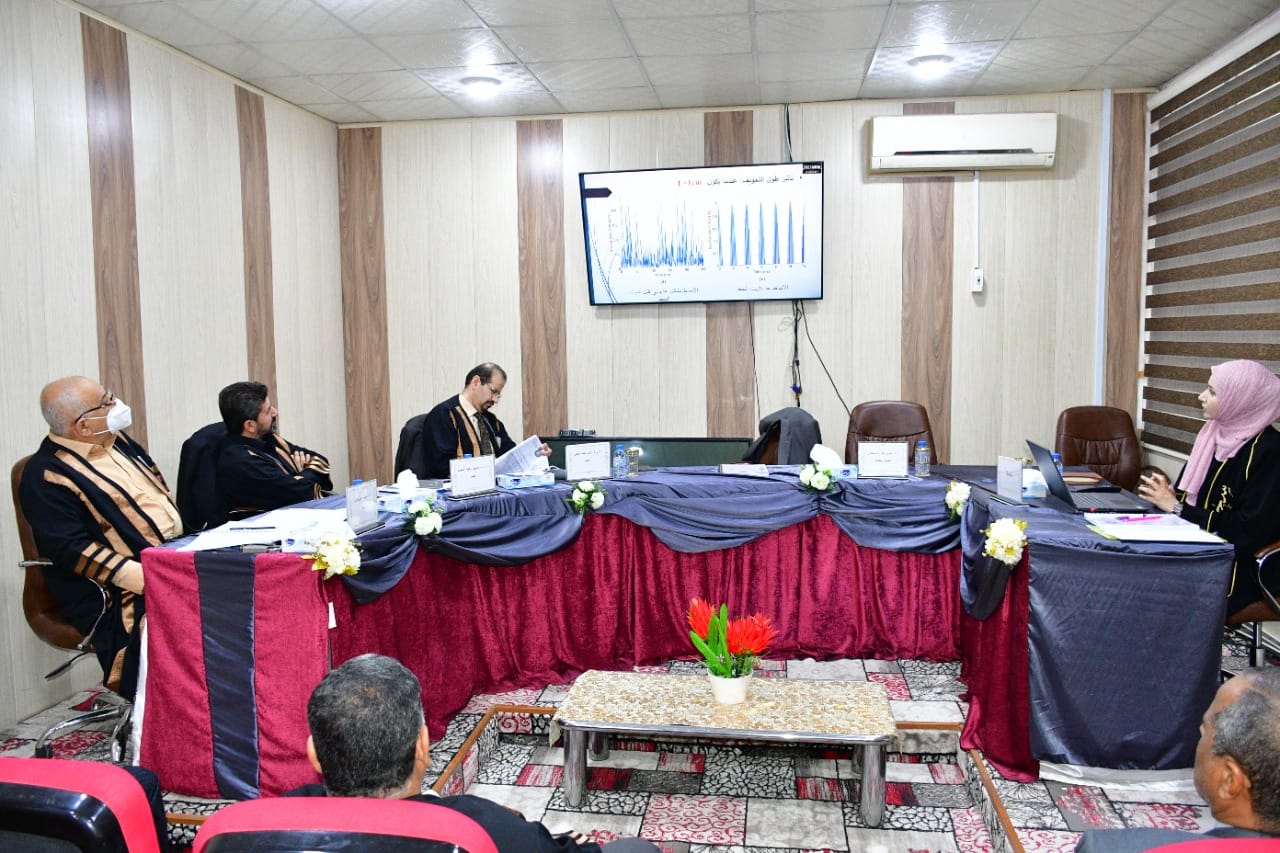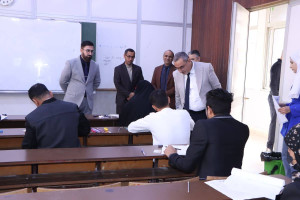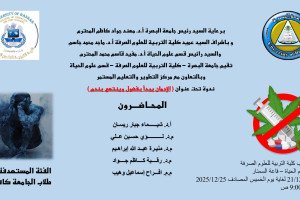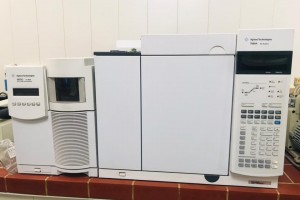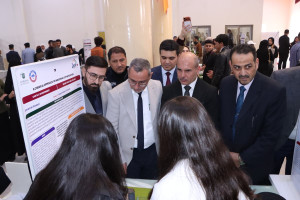
The College of Education for Pure Sciences, Department of Physics, University of Basra, discussed a master’s thesis on (a theoretical study of the optical frequency comb in semiconductor lasers using the techniques of quality parameter control, pattern stabilization and optical pumping).
The thesis presented by the researcher (Saja Jaafar Maatouk) included a numerical simulation of generating an optical frequency comb in semiconductor lasers using three techniques, namely, Q-switching, mode-locking, and optical injection locking. The characteristics of the optical frequency comb produced by these techniques for a semiconductor laser operating at a wavelength of 1550 nm were studied.
The rate equations for semiconductor lasers have been solved by the Runge-Cata method and Matlab program after adding the effect of the three mentioned techniques with studying the effect of some parameters such as the length of the laser cavity (L), shutter opening and closing speed, enhancement of line width (α) and optical pumping ratio (Iinj).
The study showed the possibility of forming an optical frequency comb in semiconductor lasers using the three techniques, and that the characteristics of the comb depend on the used technique. The study proved the dependence of the characteristics of the optical frequency comb on each of the shutter opening and closing cycles in the technique of adjusting the quality factor, on the length of the laser cavity in the technique of pattern stabilization, on the optical pumping ratio and phase difference, and on enhancing the line width when using the optical pumping technique.
The study proved that the frequency interval of the frequency comb depends on the technology used, and that the symmetry of the comb distribution on both ends of the central frequency can disappear when the optical pumping ratio increases or the line width enhancement value increases. The study also proved that the value of the phase difference affects the distribution of the optical frequency comb teeth.
The purpose of the message
A study of the optical frequency comb, its properties and methods of obtaining it using techniques: Q-Switching, Mode-Locking, Optical Injection &Feed Back.
